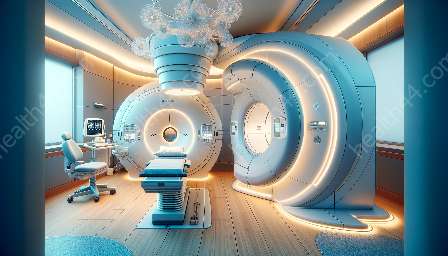Stereotactic radiosurgery (SRS) systems have revolutionized the field of radiation therapy and medical devices & equipment, offering precision and targeted treatment. This comprehensive guide explores the functionalities, compatibility with radiation therapy devices, and the real-world impact of SRS in modern healthcare.
What are Stereotactic Radiosurgery Systems?
Stereotactic radiosurgery systems are advanced medical devices that utilize highly targeted and precise radiation beams to treat tumors and other abnormalities in the brain and body. Unlike traditional surgery, SRS systems deliver radiation therapy with extreme accuracy, minimizing damage to healthy tissues surrounding the treatment area.
By employing 3D imaging and computerized treatment planning, SRS systems enable medical professionals to administer high doses of radiation to a specific target while minimizing exposure to surrounding healthy tissues. This approach makes SRS systems particularly effective for treating tumors and lesions in hard-to-reach or sensitive areas of the body.
Compatibility with Radiation Therapy Devices
The compatibility of stereotactic radiosurgery systems with radiation therapy devices is paramount for comprehensive cancer care and non-cancerous conditions. SRS systems can complement traditional radiation therapy devices by offering a non-invasive and precise alternative for treating conditions that are challenging to reach with conventional methods.
Additionally, SRS systems can be integrated with linear accelerators, Gamma Knife systems, and other radiation therapy devices to provide a multi-faceted approach to treatment planning and delivery. This compatibility ensures that medical practitioners have a comprehensive toolkit for addressing a wide range of medical conditions with varying complexities.
Benefits of Stereotactic Radiosurgery Systems
The utilization of SRS systems offers several significant benefits:
- Precision: SRS systems deliver highly targeted radiation, allowing medical professionals to treat tumors with remarkable accuracy and minimal impact on healthy tissues.
- Non-Invasive: Patients undergoing SRS treatment typically experience minimal discomfort and do not require incisions or anesthesia.
- Rapid Recovery: Unlike traditional surgery, SRS procedures often allow for quicker recovery times, enabling patients to return to their normal activities sooner.
- Expanded Treatment Options: SRS systems provide a valuable option for patients who may not be suitable candidates for traditional surgery or who have already undergone standard radiation therapy.
- Reduced Treatment Duration: The precise nature of SRS treatment means that it can often be completed in significantly fewer sessions than traditional radiotherapy, reducing the overall treatment duration for patients.
Real-World Impact of Stereotactic Radiosurgery Systems
The introduction of SRS systems has had a transformative impact on modern healthcare. These systems have enabled medical professionals to offer highly effective and targeted treatment options for patients with complex conditions, particularly those involving the brain and other delicate areas of the body.
With SRS technology, medical practitioners can now address tumors and lesions with unprecedented precision, leading to improved outcomes and reduced side effects for patients. The ability to deliver high-dose radiation with extreme accuracy has expanded the treatment possibilities for conditions that were once considered inoperable or difficult to manage.
Furthermore, the compatibility of stereotactic radiosurgery systems with other medical devices & equipment has enhanced the overall efficacy and efficiency of treatment protocols, leading to better patient experiences and outcomes.
Conclusion
Stereotactic radiosurgery systems represent a pivotal advancement in the field of radiation therapy and medical devices & equipment. Their precision, compatibility, and real-world impact have redefined treatment options for patients with a variety of conditions, offering hope and improved outcomes in modern medical practice.


